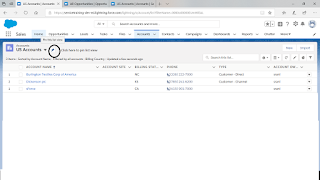1. Learn
2. Launch
3. Iterate
1. Learn:- Key points to focus on learn stage:-
- lightning features
- Compare classic with Lightning
- Identify Stakeholders
2. Launch:- Key points to focus on launch stage:-
- Identify key users and train them on lightning
- Create project schedule
- Define Success Metrics
- Training Strategy
- Customized and test
3. Iterate :- Key points to focus on this stage:-
- Evaluate Progress
- Survey Users
- Track metrics
- Deliver summary to executive sponsor
Get started by learning about the benefits and ROI that your company gets with Lightning Experience. Then assess your org's readiness to make the transition and align your transition goals with stakeholders.
Check your Lightning Experience readiness
Run the Readiness Check to see if existing features or customizations need attention. You get a custom Readiness Report with recommended actions.
This report will be saved in files and Salesforce will send on email.
This report will evaluate following:-
- User profiles
- Tabs and objects:
- Documents
- Territory Management
- Enterprise Territory Management
- Sales Cloud related lists:
- Account Contact Roles
- Account Partners
- Campaign Influence
- Opportunity Partners
- Custom buttons and links:
- JavaScript
- URLs that link to other pages in Salesforce
- Actions and buttons
- Visualforce pages
- Home page and sidebar components
- Email templates
- Mail merge
- Lookup fields
- Activities
- Cases
- Report and dashboard folder sharing
- Third-party computer-telephony integration (CTI)
- Salesforce Console (Sales and Service)
- Omni-Channel
- Live Agent
- Salesforce Knowledge
- SOS
- Entitlements
- Solutions
- AppExchange packages
- Hard-coded URLs and My Domain
- S-controls
- Sharing buttons
- Data.com
- Web browsers
Reference URL:-








